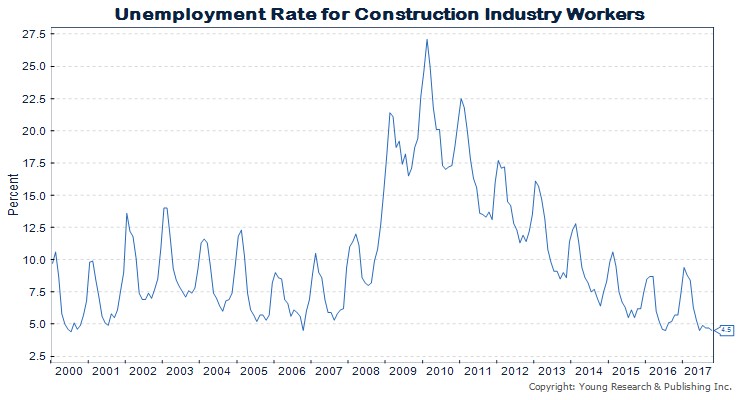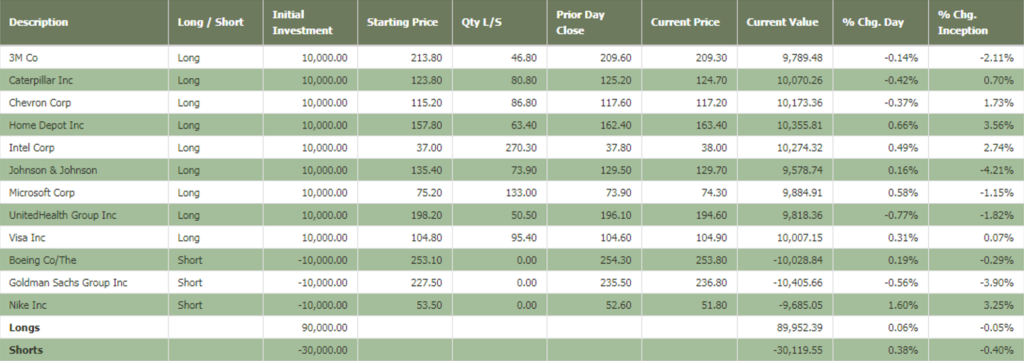Which companies are the most dependable dividend payers in the Dow? That may seem like an odd question to ask considering the Dow is comprised of some of America’s most successful blue-chip companies. But while Dow stocks may have more reliable dividends than your average company, dividend dependability should not be taken for granted. General Electric, once considered America’s most venerable blue-chip industrial, slashed its dividend last month. Citigroup, Bank of America, (both former Dow members), and JP Morgan were once among America’s most respected banks, but all three cut their dividends during the financial crisis.
Young Research developed a dividend dependability ranking to provide you with a snapshot of the Dow stocks that have the most secure dividends today. If you are a retired investor who relies on quarterly dividend checks to fund a portion of your retirement spending, Young Research’s rankings can help you minimize the chances of a cash flow shortfall.
The rankings are based on a variety of quantitative and qualitative factors including dividend coverage, earnings variability, financial strength, and growth prospects.
Over the coming weeks, I will provide you with insight and commentary on all 30 Dow stocks. This week I focus on the ten stocks that rank lowest in terms of dividend dependability.
The Dow’s Least Dependable Dividend Payers
The ten stocks below, listed in alphabetical order, are ranked lowest for dividend dependability by Young Research. For each stock I have provided the indicated dividend yield, projections for dividend growth in 2018, and commentary on why the stock scored where it did in terms of dividend dependability. Note that a low dividend dependability ranking does not signal an imminent dividend cut. A low ranking does indicate that the risk of a dividend cut is greater than it is for the average Dow company, especially in the event of adverse economic, business, or market conditions.
| wdt_ID | Company | Indicated Yield | CY 2018 Proj. Div. Growth | Comments |
|---|---|---|---|---|
| 1 | MERCK & CO. INC. | 3.49 | 2.10 | Above average earnings variability and below average growth projections drag down ranking. |
| 2 | JPMORGAN CHASE & CO | 2.14 | 7.70 | Lower than average financial strength and qualitative factors bring down ranking. |
| 3 | INTL BUSINESS MACHINES CORP | 3.89 | 6.70 | IBM barely missed the second grouping. Qualitative factors and low earnings growth projections dragged it down. |
| 4 | GOLDMAN SACHS GROUP INC | 1.21 | 8.60 | Above average earnings variability, lower than average financial strength, and qualitative factors bring down ranking. |
| 5 | GENERAL ELECTRIC CO | 2.71 | -50.00 | One of highest earnings variability ratings kept GE, even with a reduced dividend, in the lowest grouping. |
| 6 | EXXON MOBIL CORP | 3.73 | 2.60 | A high payout ratio, high earnings variability, and qualitative factors pushed Exxon into the bottom grouping. |
| 7 | DOWDUPONT INC | 2.13 | 0.00 | High earnings variability, below average growth projections, and lower than average financial strength bring down ranking. |
| 8 | CISCO SYSTEMS INC | 3.09 | 10.60 | Lower earnings growth projections and qualitative factors drag Cisco down. |
| 9 | CHEVRON CORP | 3.61 | 1.80 | High payout ratio, high earnings variability, and qualitative factors drag down ranking. |
| 10 | AMERICAN EXPRESS CO | 1.42 | 9.00 | Above average earnings variability, lower than average financial strength, and qualitative factors bring down ranking. |
As you may have noticed, a number of the least dependable dividend payers offer above average yields. Dividend dependability and dividend yield are inversely related. You will find as I run through all 30 Dow stocks, that the companies with the most dependable dividends have below average yields. How you choose to successfully balance dividend dependability and yield in your portfolio will depend on your own investment objectives and risk tolerance. Dividend dependability isn’t the only factor that should be used to craft dividend portfolios, but it is an important factor.



